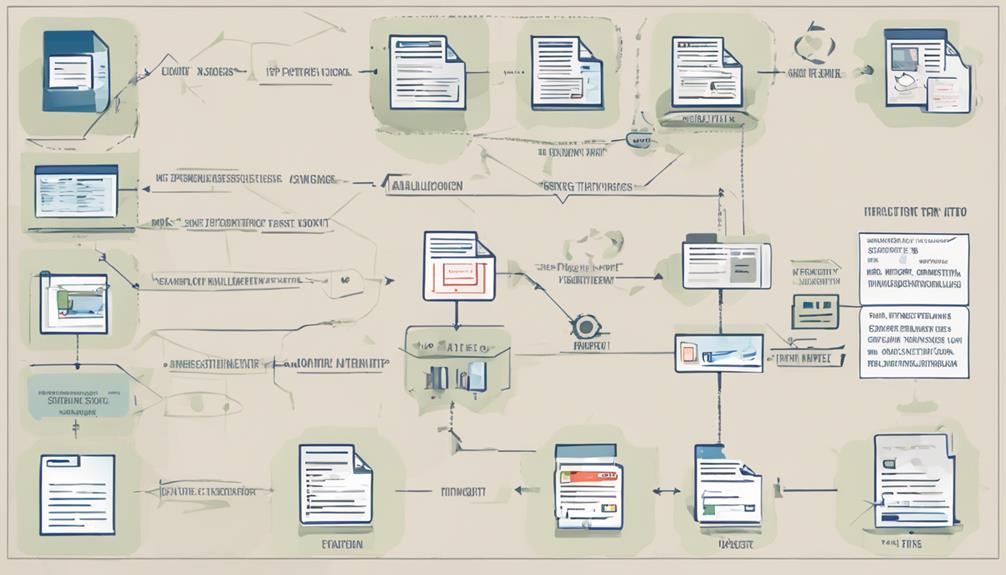When embarking on SGML to XML conversion, did you know that 78% of organizations face challenges due to inadequate planning and execution? Understanding the complexities involved in this transition is crucial for successful implementation. By addressing key considerations such as document structure, data migration, file compatibility, conversion tools, and validation processes, you pave the way for a smoother and more effective conversion. Stay tuned to uncover the essential insights that can make a significant difference in your SGML to XML conversion journey.
When to Convert SGML to XML
If you are considering the transition from SGML to XML, it is crucial to evaluate the specific circumstances that warrant such a conversion. Understanding the conversion benefits is essential. XML offers more flexibility and compatibility with modern systems, making it easier to integrate with various applications and platforms. Additionally, XML provides better support for multilingual content and allows for easier data sharing across different departments or organizations.
Conducting a cost analysis is another important aspect when determining when to convert from SGML to XML. Consider the initial investment required for the conversion process, including any necessary training for employees and potential downtime during the transition. However, it is important to weigh these costs against the long-term benefits that XML can provide, such as improved efficiency, easier maintenance, and better scalability.
Tools for SGML to XML Conversion
Considering the benefits and cost analysis involved in converting from SGML to XML, the next step is exploring the various tools available for this conversion process. When comparing tools for SGML to XML conversion, it is essential to assess their features, ease of use, and compatibility with existing systems. Some tools offer batch processing capabilities, while others provide more customization options. By evaluating these aspects, you can choose a tool that best suits your specific requirements and workflow.
One of the primary conversion benefits of using specialized tools is the automation of the process, which reduces manual effort and ensures accuracy. Additionally, these tools often offer validation functions that help maintain the integrity of the converted data. When selecting a tool, consider factors such as scalability, support, and cost to determine the most suitable option for your organization. By conducting a thorough tool comparison, you can streamline the SGML to XML conversion process and enhance efficiency in managing structured data.
Steps in SGML to XML Conversion
To initiate the SGML to XML conversion process, begin by identifying the structure and elements within your SGML documents. This step is crucial as it helps you understand the layout and hierarchy of the data, making the transition smoother. Next, analyze the data migration requirements, ensuring that all necessary information is correctly transferred from SGML to XML. Consider the file format compatibility to ensure that the converted XML files can be seamlessly integrated into your existing systems.
After understanding the structure and elements, proceed with selecting a suitable conversion tool that aligns with your specific needs. Utilize the chosen tool to convert the SGML documents into XML format efficiently. Once the conversion is complete, validate the XML files to confirm that the data has been accurately converted and there are no errors present.
Challenges in SGML to XML Conversion
Navigating the process of SGML to XML conversion presents several challenges that require careful consideration and strategic planning. Two critical challenges encountered during this conversion process are maintaining data integrity and preserving formatting.
Ensuring data integrity is crucial when converting from SGML to XML. It involves accurately transferring all the data from one format to another without losing or corrupting any information. This requires meticulous attention to detail and thorough quality checks to guarantee that the data remains consistent and reliable throughout the conversion.
Preservation of formatting is another key challenge in SGML to XML conversion. SGML and XML have different markup rules and syntax, which can affect the visual presentation of the content. It is essential to develop a structured approach to retain the original formatting elements such as styling, layout, and hierarchy during the conversion process. This helps in maintaining the document’s readability and structure in the new XML format.
Successfully overcoming these challenges demands a systematic approach, expertise in both SGML and XML, and the use of specialized tools to ensure a smooth and accurate transition.
Outsourcing SGML to XML Conversion
When looking to outsource SGML to XML conversion, businesses often seek specialized expertise and efficiency in handling the transition seamlessly. Outsourcing this task can offer significant cost-saving benefits compared to in-house conversion processes. By leveraging the expertise of professionals who specialize in SGML to XML conversion, businesses can streamline the process and avoid costly errors that may arise from inexperienced handling.
Quality assurance is another key aspect to consider when outsourcing SGML to XML conversion. Reputable outsourcing companies often have stringent quality control measures in place to ensure the accuracy and integrity of the converted data. This can provide businesses with peace of mind knowing that the conversion process is being handled with precision and attention to detail.
Frequently Asked Questions
Can SGML Entities Be Directly Transformed Into XML Entities?
Yes, you can directly transform SGML entities into XML entities. Ensure compatibility concerns are addressed during entity transformation to maintain data integrity. Always validate the conversion process to guarantee accurate representation of content.
Are There Any Compatibility Issues Between SGML and Xml?
Yes, there may be some compatibility issues between SGML and XML. Formatting differences and encoding challenges can arise during the conversion process. It’s important to address these issues carefully to ensure a smooth transition.
Is It Necessary to Update All SGML Documents to Xml?
You should update all SGML documents to XML for smoother data migration and better compatibility with modern systems. Legacy systems may struggle with SGML, but XML offers a more standardized and flexible structure.
How Can the Integrity of Data Be Maintained During Conversion?
To maintain data integrity during conversion, you should utilize data validation tools. For instance, by running validation checks before and after the SGML to XML conversion, you can ensure accuracy and consistency in the data.
What Are the Potential Risks of Not Converting SGML to Xml?
Not converting SGML to XML risks data integrity. Without XML benefits like structured data and interoperability, you may face format inconsistencies and limited compatibility. Ensure smooth transitions and enhanced data management by converting.



